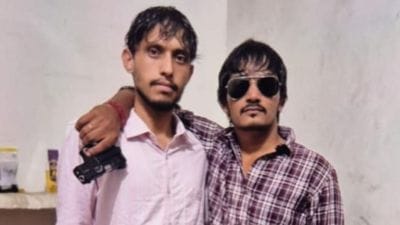Breeding Winners
So you thought the Aussie winning habit came naturally? Think again. Hogwarts for the Wizards of Oz is a university campus in Brisbane where...

So you thought the Aussie winning habit came naturally? Think again. Hogwarts for the Wizards of Oz is a university campus in Brisbane where, every year, around 25 top young Australian cricketers, and others from around the world, are given 14-week scholarships.
They are put through an intensive coaching schedule overseen by specialists and, at the same time, enrol in academic classes. At the end of it all, the cricketers are not necessarily stars or geniuses — but they acquire an all-round sheen that goes far beyond bat, ball and stump.
Above all, they acquire the toughness that is identified with the Oz brand of cricketer.
‘‘I learnt how to enjoy my cricket, how to celebrate’’, says rising star Shikhar Dhawan, who along with Venugopal Rao (see box) attended the Commonwealth Bank Centre of Excellence last year. ‘‘There was so much hard work, so much activity yet there was something unique that made it all enjoyable.’’
Cue to India, the country where cricket is a religion and education a must. But barring the National Cricket Academy in Bangalore, where the BCCI hands out favours to former cricketers in the form of random coaching stints, there is no attempt at marrying the two.
And so Indian cricketers have been attending the CoE since 2000 under the Border-Gavaskar Scholarship Program, which was announced at the same time as the redesigned trophy for Indo-Australia Test matches. Dinesh Kaarthick and Vidyut Sivaramakrishnan are the latest to join the ranks this June.
|
INDIANS AT THE CoE
|
|
|
• SS Das, Mohammed Kaif, and S Sriram: 2000 Story continues below this ad |
‘‘India is the perfect market for this concept because at 18 it is very difficult to ask a youngster to decide his future’’, says Michael Jeh, Sports Initiatives Consultant at the Griffith University, where the CoE is based.
What makes this CoE concept special? Unlike most academies, Cricket Australia wanted to have an environment where the cricketers were not spending 14 weeks in hotel rooms. So the youngsters live on a university campus along with 800 other students.
‘‘These talented cricketers run the risk of thinking too early that they are superstars and that normal rules don’t apply to them. It runs the risk of giving these youngsters the wrong values’’, says Jeh.
It works both ways, of course, and here’s something else that our Indian stars could do with. ‘‘It’s great for a student community to have these guys around and understand that, despite being elite athletes, they’re just normal, everyday guys who face the same ‘human’ issues as everybody else’’, says Jeh.
|
Sporting Schools
|
|
|
The trend around the world is for academies to merge sporting instruction with general vocational training. Those attending the programmes run by the top English football clubs have to take courses in selected nearby colleges. The need for education is not felt in the Third World alone; footballers typically come from economically less-well-off sections of society and spend their professional lives a broken leg away from early retirement. So a bit of vocational training always comes in handy. |
Cricket-wise the main difference, says Dhawan, was that they worked on particulars for two weeks at a stretch, unlike here in India. ‘‘In India we have a fixed schedule before we start our training programme. Monday is for stamina, Tuesday for agility; in Griffith for the entire six weeks we were working on cardiovascular and skills.’’
Off the field, he says, one learnt to be self-dependent in typically Aussie style. ‘‘There’s no one to keep feeding you. They will tell you something once or twice, then you’ve got to do it yourself. Today I don’t depend on someone to train with me; if I feel like training, I do it myself. Even players like Hayden and (Damien) Martyn, were practicing, and they didn’t depend on anyone to feed them with balls.’’
All this, and studies too. ‘‘Thankfully, I didn’t have to study there’’, says Dhawan, ‘‘but it’s a good idea because then you have something to fall back on. Every evening they’d attend computer classes.’’
You could just as easily see this scenario in Mumbai, Delhi, Bangalore, Chennai and Chandigarh; all are cities with a strong tradition of both cricket and education, and all could easily accommodate a centre of excellence that could give India its next generation of well-groomed cricketers.
(Reported by Faisal Sharif, G.S. Vivek and Chandresh Narayanan)
Photos





- 01
- 02
- 03
- 04
- 05


























